Nature is full of exciting different species—some may be weird from the start, but some have evolved and adapted themselves as per their needs. Here's a sneak peak of those adaptations!
The animal kingdom has evolved with some amazing surprises! Different species have varied specialities like - some fly, some walk, some swim, some dwell on trees and some hop. All these are just adaptations that the animals have gone through to survive in their given habitats. These not only help them travel but also escape danger, fend for food, and explore new territories.
Some adaptations are physical whereas some are behavioural. Webbed feet to aid in gliding on water, sharp claws for digging or hunting, sharp teeth for adjusting to their specific diet, or large beaks and wings are just a few examples of physical adaptations. Nonetheless, the point is that all these help the animals in surviving in their given habitats.
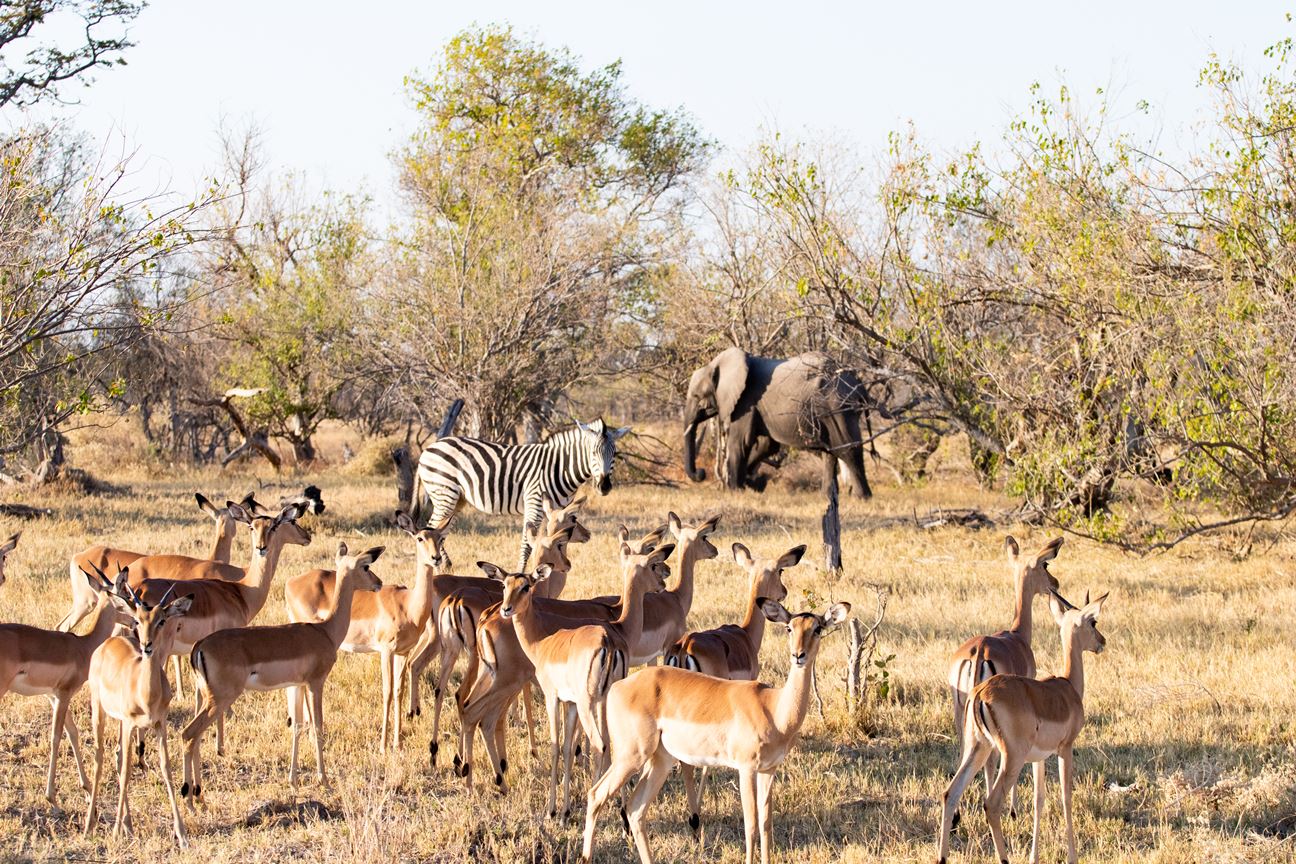
Basic adaptations start with living in communities — be it same species or inter-species. Living together helps them to support each other for either finding food or for saving each other from predators. Animals stay in herds, nuclear families, or huge colonies — whichever works best for them.
Migration is also another important feature. Thousands of species migrate for several reasons like finding food, finding a mate, or to avoid harsh weather conditions. The Arctic Tern is a true globetrotter (literally!). It travels pole to pole all its life! There are other weird animal migrations too, you'd be delighted to know!
Hibernation
It definitely seems like a smart idea to snooze all winter and get up when there’s warm sun and food around. Animals like bears, chipmunks, hedgehogs and such hibernate all winters. However, there are many small amphibians and rodents, too, that increase their survival chances by hibernating.
Almost 60% of Alaskan Wood Frogs freeze their bodies in winters! The frog’s heart also stops beating while it stops breathing. This adaptation is done for surviving the extreme winter that goes below -80°F. The only reason their organs survive this long period is because of its stocked up glucose, which is 10X more than usual. The frogs come back to life in spring.
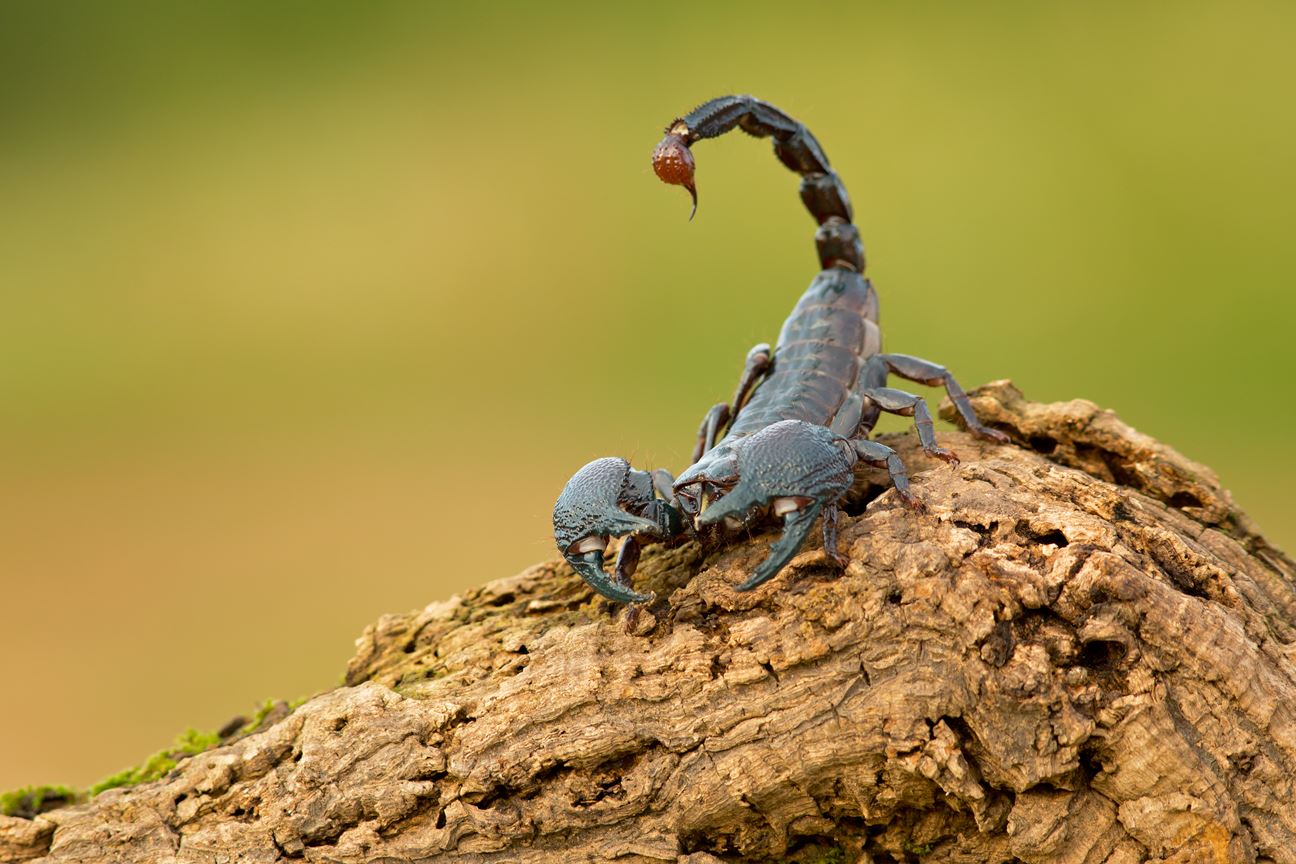
- Scorpions have mastered the act of hibernating while still awake. They can lower their metabolic rate but also be as sharp as a tack!
Battling Harsh Weather
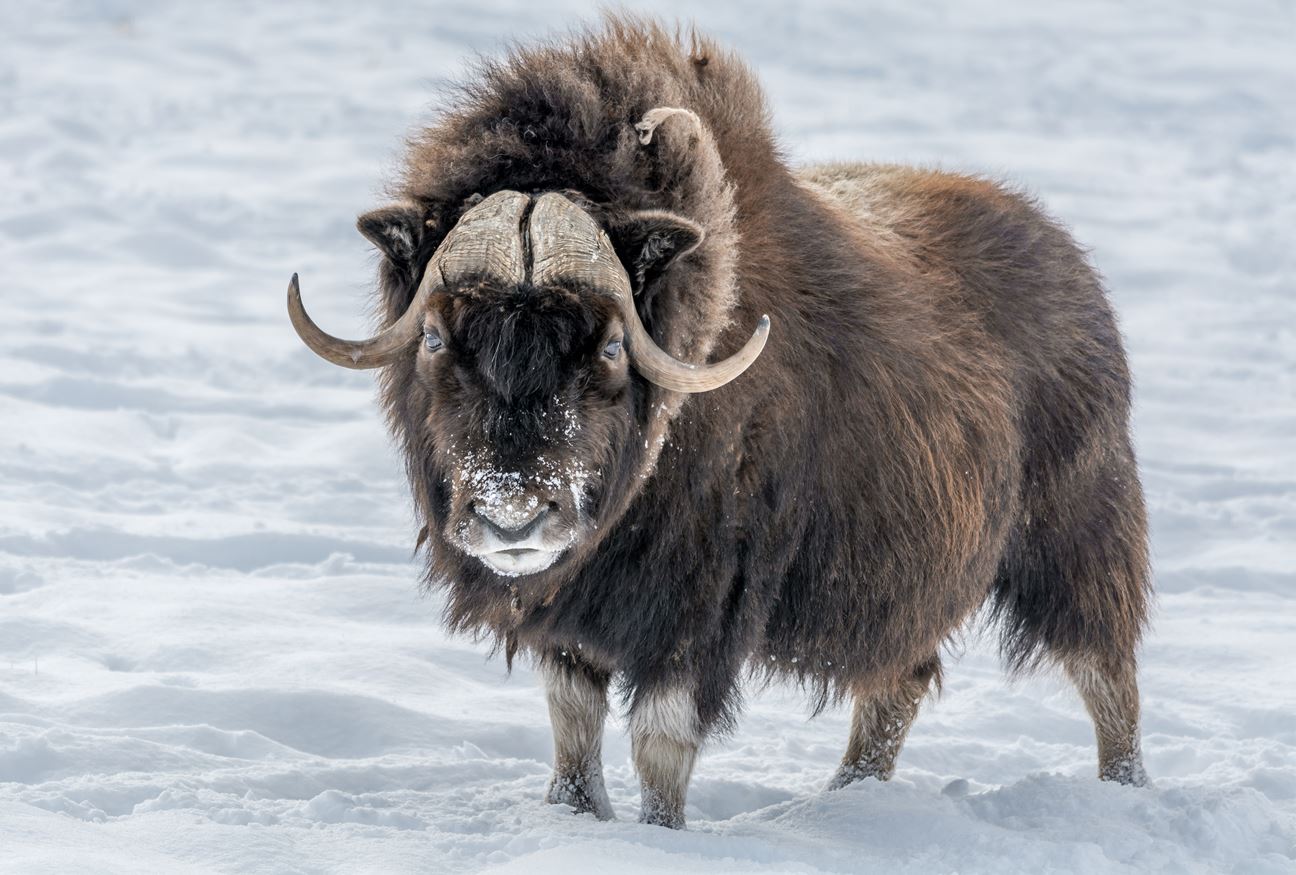
- Fur in mammals is a very efficient adaption to survive the chilling cold. Several animals like the Musk Ox from Tundra can survive the temperatures dropping to -30 °F because of its thick coat. Plus, these animals can also shed later to adjust themselves in summers.
- A few Notothenioidei fish survive the extreme Antarctic waters by producing their own ‘antifreeze’ glycoprotein!
Desert is another extreme weather condition, and animals have to highly adapt to survive.
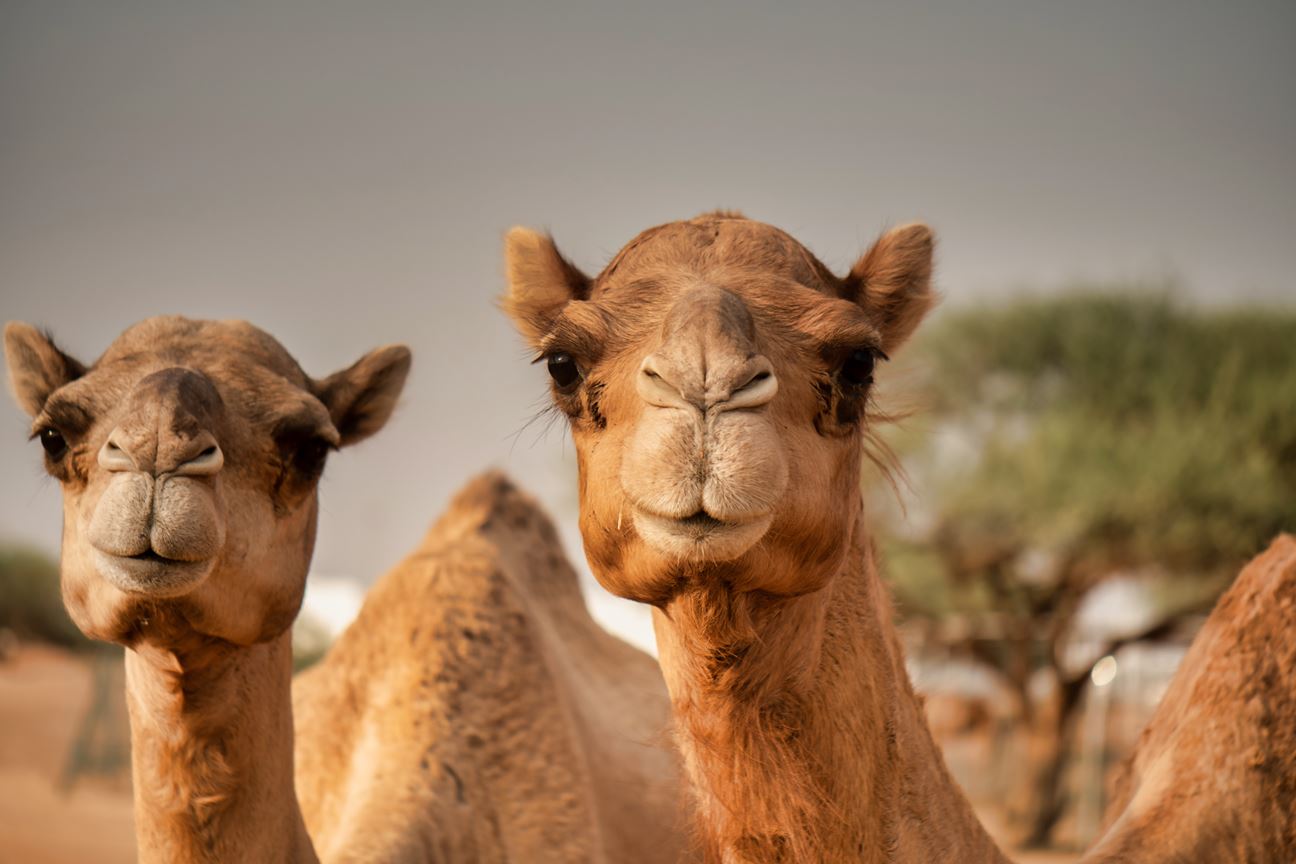
- Camels are the best examples of using resource conservation to survive the harshness of nature. Camels can store fat in their humps; which can later be used as a water and food source in thriving times, like when the temperature rises up to 100°F in summers. These animals also have thick eyelashes and thick hair in their ears to keep out sand. They can also go without sweating.
- Kangaroo Rats actually survive on the seeds that they eat, which also provide them with water. So, they don’t actually have to drink water.

- The African Bullfrog, staying in Africa’s Savanna, buries itself 6–8 inches underground and creates mucus around its body. The mucus membrane helps it dissolve oxygen in the air and effectively breathe. The membrane turns into a cocoon gradually and aids the frog in surviving for up to 7 years without rain. The frog comes out of hiding only after it rains.
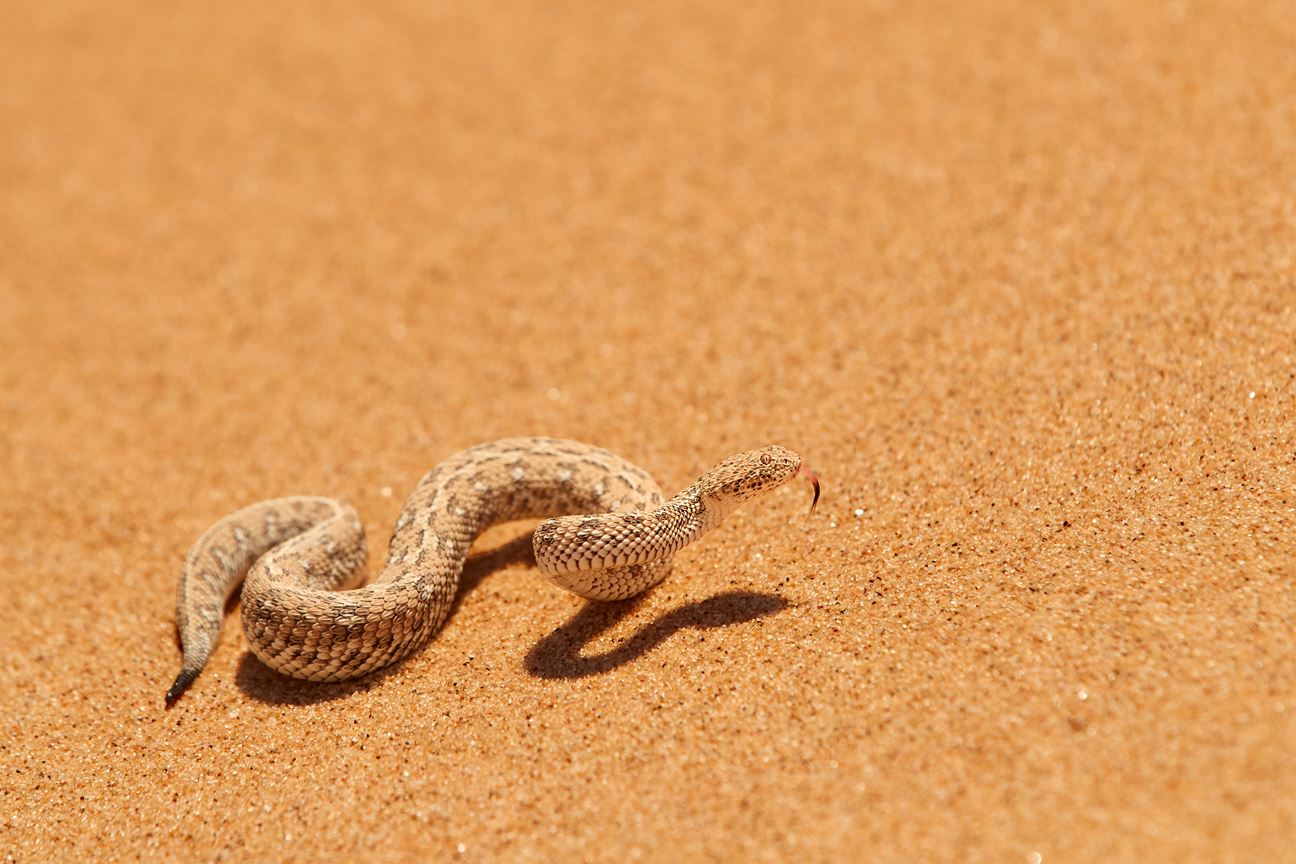
- Ever seen a Sidewinder move? This unique form of locomotion is an adaptation so that only two points of the snake’s body come in contact with the hot desert sand. Other snakes like the Namib Desert Viper share the same ability.
- Another unusual animal is the Javelina or Peccary, which has a specialised digestive system that can help digest the thorny cactus pads it eats.
- Kangaroos also have this unique way of cooling off in their hot Australian habitat. They lick their forelegs so they can cool off when the evaporation takes place. They also have special blood vessels that aid in this process. These spit baths come in handy as they lack sweat glands.
Camouflage
Camouflage is another ability shown by thousands of species. Many may change their look to match their surroundings, many may appear something terrible, or many may just appear boring. Striped fur, bright or dull feathers, spotted coat are few very common ways that help an animal or bird to camouflage with its surroundings. We’ve heard about the common examples like chameleons, stick insects, spiders, and birds; but there are many more camouflage masters.
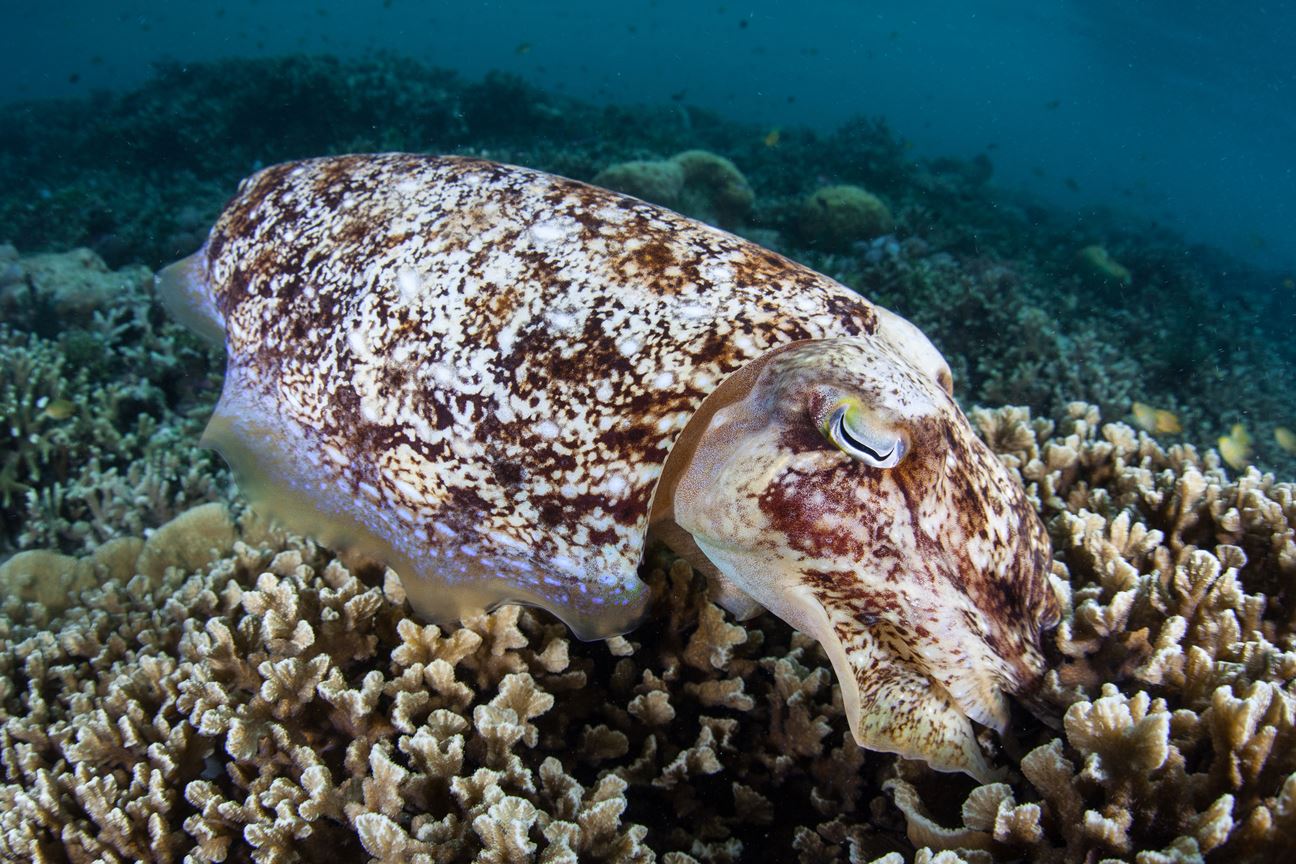
Cuttlefish have the ability to detect the amount of light in its surrounding and mimic the same with its pigments. Their skin has three-coloured layers — red, yellow, and brown. They stretch their skin in order to produce other colours/textures and change their looks completely. This helps the fish escape from predators and also sneak on its prey.
Body Adaptations
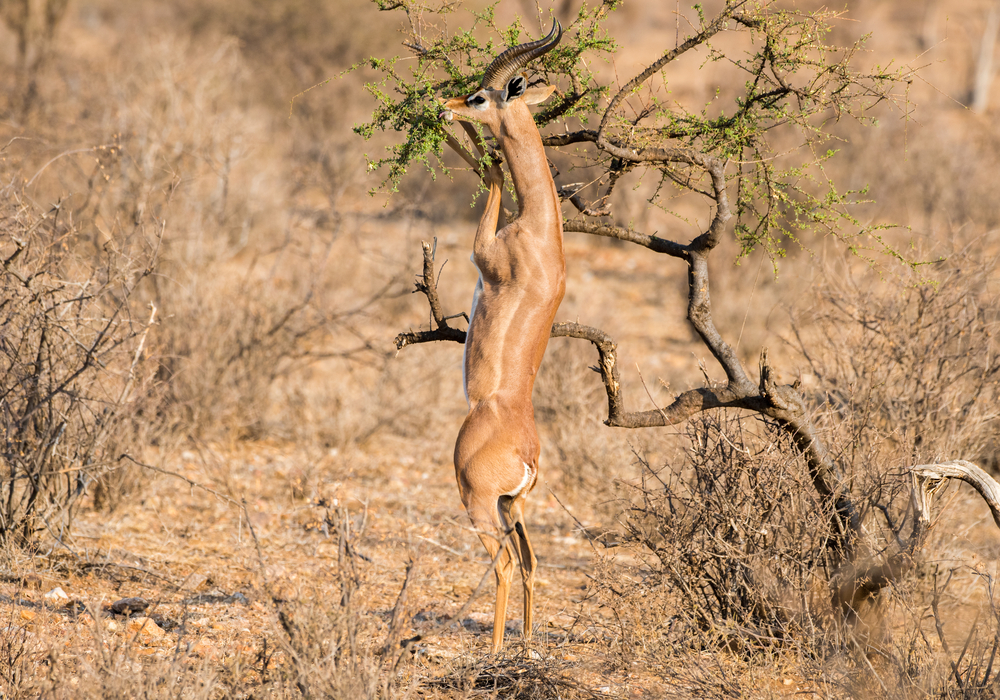
- Gerenuks have long necks and thin legs, which help them stand up on two legs to graze on the acacia leaves that they love. There’s a lot of competition in Savannas as it is, so this adaptation has helped them keep themselves full.
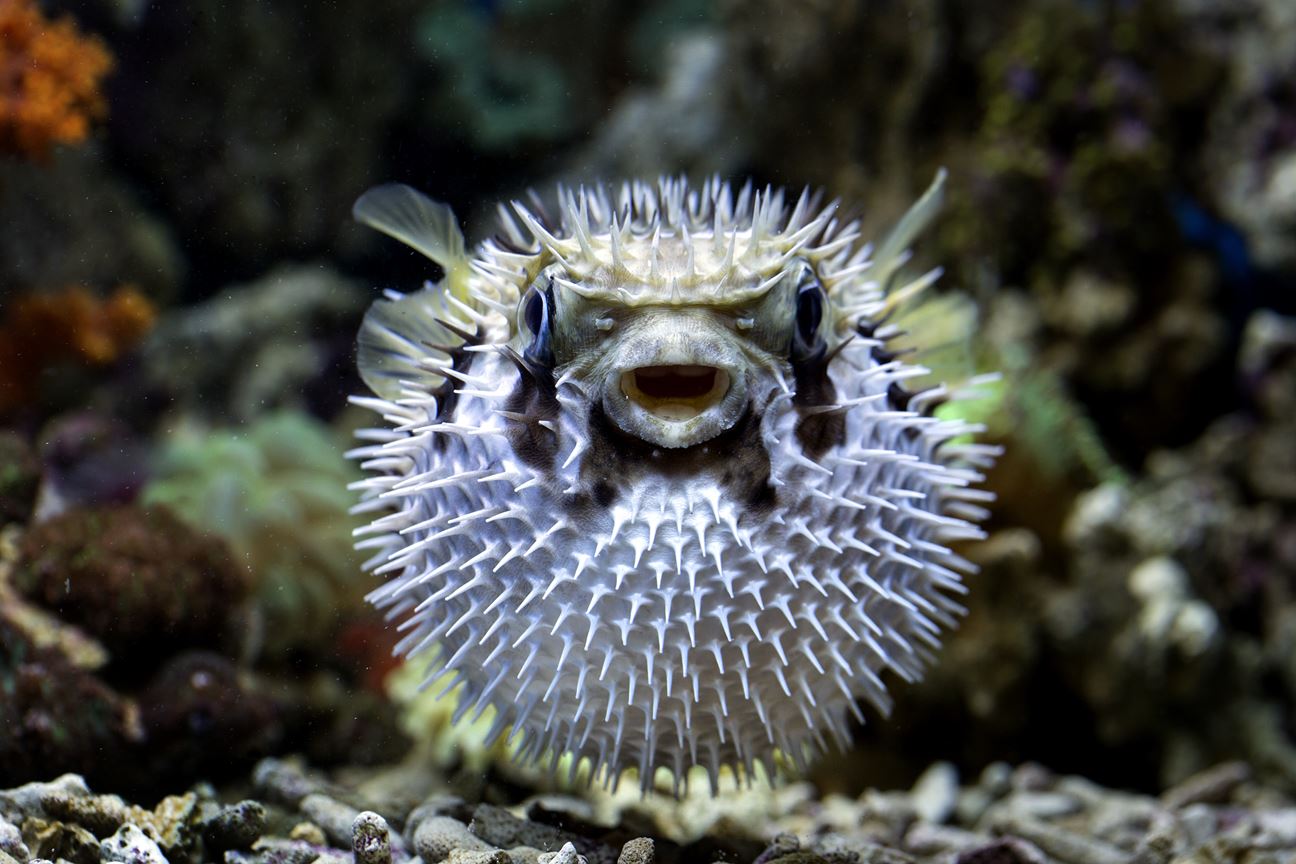
Many animals have the ability to look larger and intimidate their predators. One such example is that of the Pufferfish. When threatened, it will pump air or water in its stomach and form a round shape with its scales protruding. The fish can’t move, but it scares off the predator. It can go into a crevice and blow up so the predator will be unsuccessful in getting it out. The Chuckwalla, a lizard found in US and Mexico deserts, also applies the same method.
Special Mentions
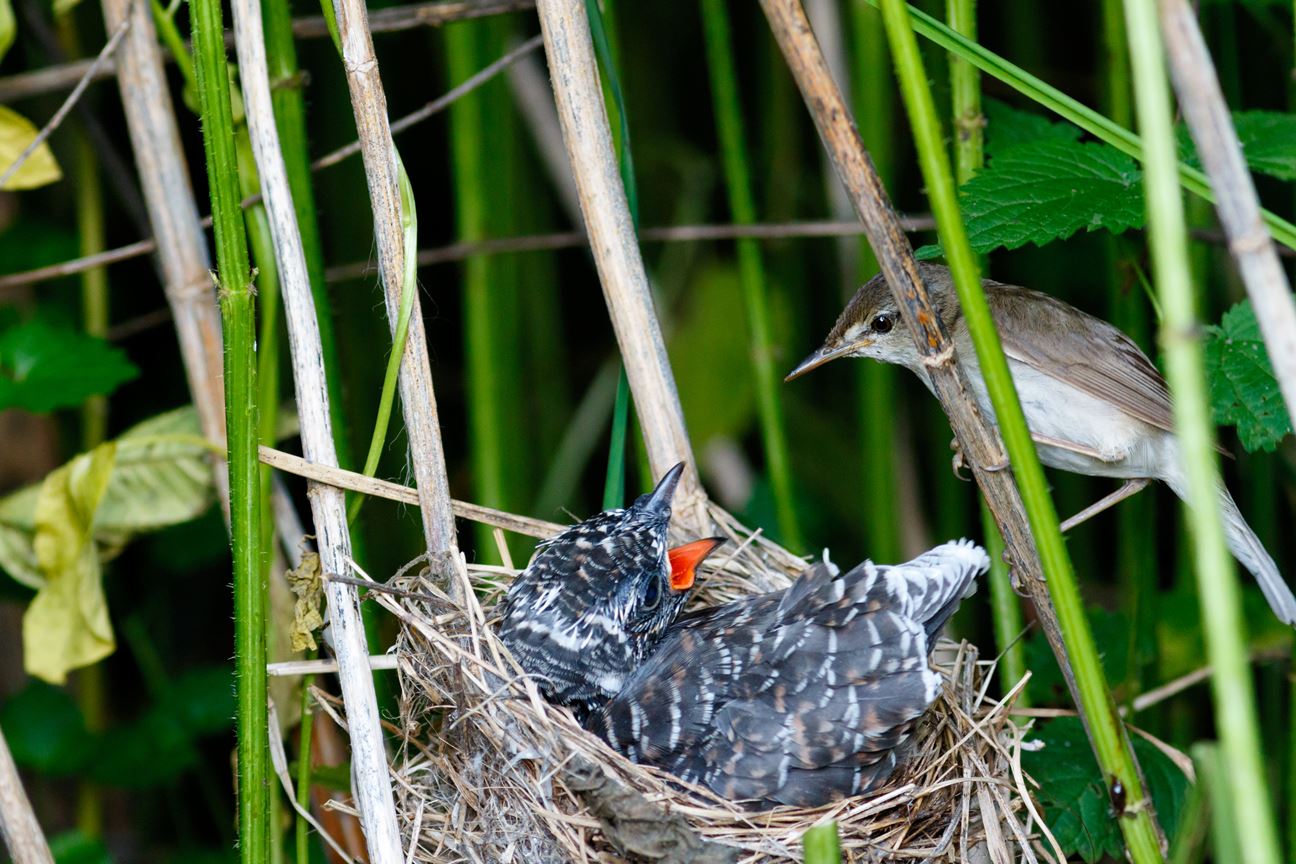
- Cuckoo birds are renowned for nest parasitism. They lay their eggs in nests of other species and let them care and nurture their chicks. Usually, cuckoo chicks grow larger than the chicks of the host and may hog on all the food, or even push the eggs or chicks out of the nest. This helps them eliminate their competitors in nature.
- The Common Kingsnake has evolved in such a way that it has gotten immune to rattlesnake venom, its favourite diet!
Cormorants are commonly found birds that are excellent divers — some may dive up to 45 metres. These birds have poorly developed oil glands, which actually are good for them as they can dive. But their wings do get wet, and hence most of them are seen drying their wings on the river banks.
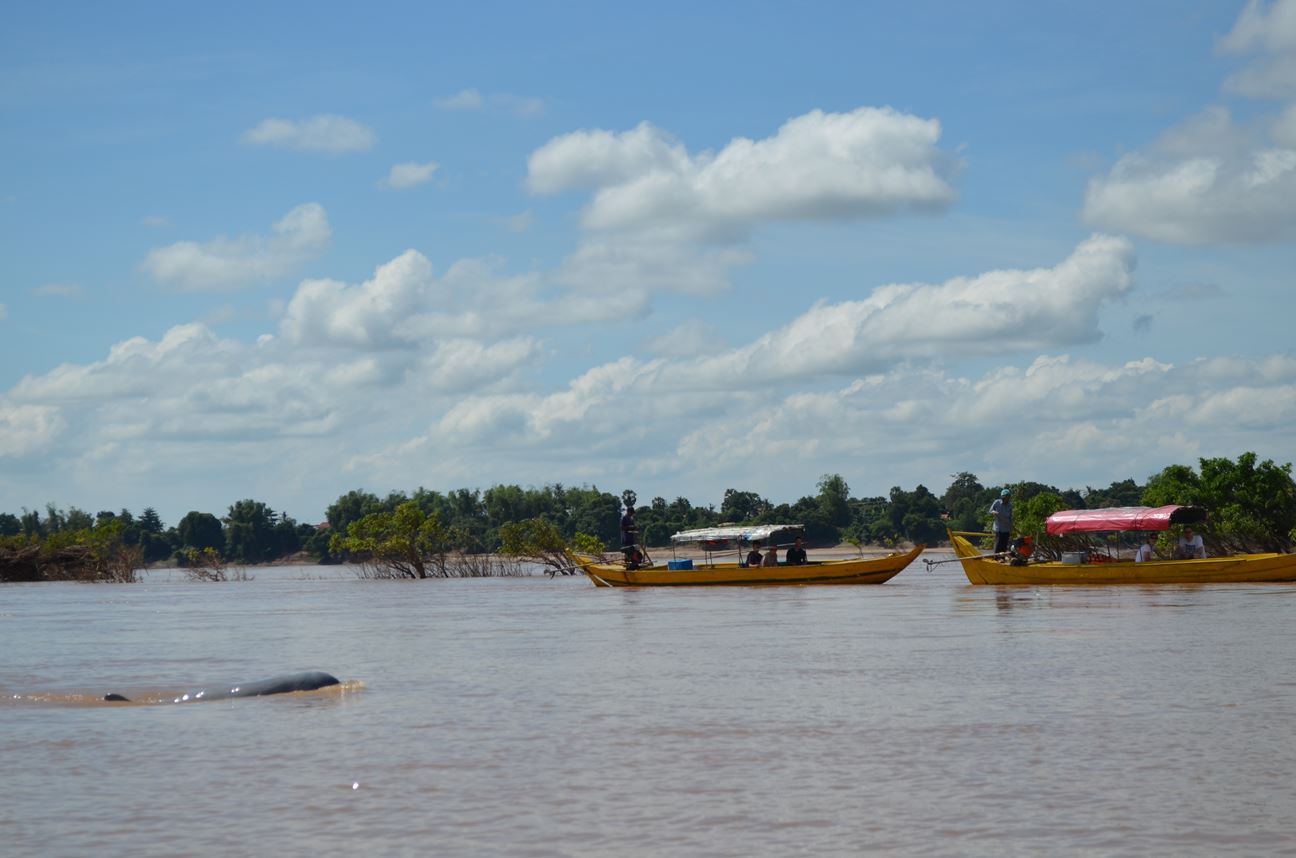
Last but not the least, most of the animals have perfectly adapted to urbanisation. One fascinating example is of an endangered species, Irrawaddy Dolphin, which has shown remarkable smartness by adapting to the fishermen in Myanmar. The fishermen make some noise with a wooden stick to summon the dolphins. The dolphins arrive close, drive schools of fish towards the fishnets, and even signal the men that the work is done. The dolphins then feed off the fish that try to escape. I leave you with the thought of how fascinating that probably could be!